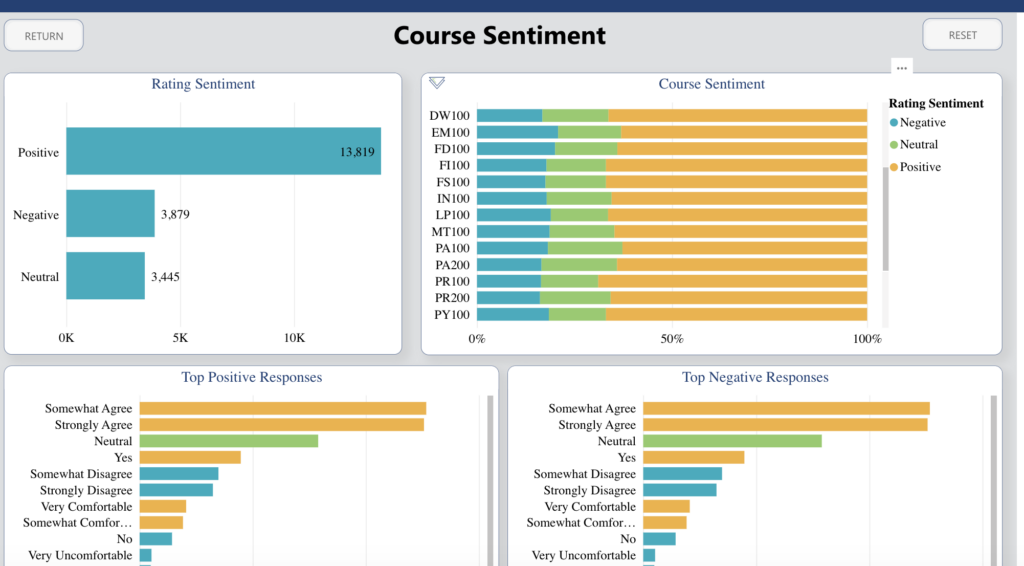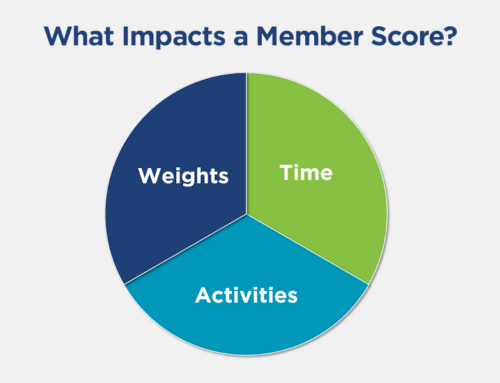In the fast-paced world of online education, understanding the effectiveness and impact of learning programs is crucial for associations. By harnessing the power of learning analytics, decision-makers can gain valuable insights into learner behavior, course effectiveness, and overall program success. Let’s dive into how learning analytics can drive engagement, improve course completion rates, identify gaps in learning programs, and optimize the learning experience.
Going Beyond Basic Metrics
Learning analytics goes beyond basic metrics to offer you a deeper understanding of course performance and learner engagement. While enrollment numbers and completion rates provide surface-level insights, digging into learner behavior and demographics can uncover more valuable information like which courses hold the most value for which learners and the factors contributing to their success.
Example: Using more advanced learning analytics, one association was able uncover that the courses they offered with industry certifications had significantly higher completion rates than those without. Armed with this insight, they began to expand their certification offerings and saw a boost in learner engagement and satisfaction.
Assessing Learner Sentiment

Example: Through a learner sentiment analysis, one association discovered that one of their courses consistently received low ratings due to challenging content delivery. With this feedback, they revamped the course material, incorporated interactive elements, and saw a significant improvement in learner satisfaction and completion rates.
Analyzing Instructor Performance
Be sure to track completion rates, course ratings, and learner engagement for each of your different instructors so you can easily identify trends and discrepancies. This data-driven approach ensures that learners receive the best possible educational experience, with high-quality instructors driving engagement and knowledge retention.
Example: A professional association analyzed instructor performance and found that courses taught by a specific expert received consistently positive reviews and higher completion rates. As a result, they invited the expert to develop more courses and saw an increase in learner enrollment and program revenue.
Understanding Seasonal Enrollment Patterns
Seasonality plays a significant role in education program enrollment, impacting engagement levels and learner preferences. Identifying peak enrollment periods and understanding the external factors influencing them will allow you to optimize your offerings. By aligning education programs with seasonal demand, associations can maximize engagement and drive learner satisfaction.
Example: A healthcare association noticed a spike in enrollments for healthcare management courses during the months when industry conferences were scheduled. To capitalize on this trend, they strategically offered targeted courses leading up to conferences and experienced a surge in participation and membership renewals.
Identifying Gaps in Learning Programs
The best way to improve is to know where you have gaps in content and understanding. What are learners missing from you? Which courses do they have a difficult time completing? Learning analytics can help pinpoint areas where learners struggle the most so associations can develop targeted communications and resources to address these gaps. Whether it’s modifying course content, improving instructional methods, or offering additional support, insights found in learning analytics can lead to changes that improve your learner experience.
Example: An IT association discovered that learners consistently faced challenges in one specific module of a coding course. Using learning analytics data, they took action to redesign the module, added additional practice exercises, and provided live Q&A sessions with instructors, resulting in a notable increase in course completions and positive feedback from learners.
Tracking Long-Term Impact
True success for your learning programs can be found by evaluating their long-term impact. Did learners who completed your program experience career advancement or increased job performance? Proxy measures and surveys can help gather this data and gain insights into the overall impact your education courses have on learners’ professional growth.
Example: A professional development association conducted a post-course survey and found that 75% of learners who completed their leadership development program reported receiving promotions within six months of course completion. This data validated the program’s effectiveness and contributed to a boost in program enrollments.
Data-Driven Learning Programs
Learning analytics can revolutionize the way your association approaches education programs and empower you to make data-driven decisions that will undoubtedly improve your learners’ experience. By going beyond basic metrics and digging deeper, you can uncover insights that will lead to more satisfied learners and more successful educational programs. Embracing learning analytics as a strategic tool ensures that your programs remain relevant, engaging, and impactful in an ever-evolving digital landscape.
If you’d like to dive deeper into this topic, you can watch our on-demand webinar about going beyond basic learning metrics. In addition, Acumen’s learning analytics module is packed full of visual dashboards that make it quick and easy to find all the insights above and more. If you’d like to see this in action, schedule a demo with one of our data experts or read more about learning analytics.



